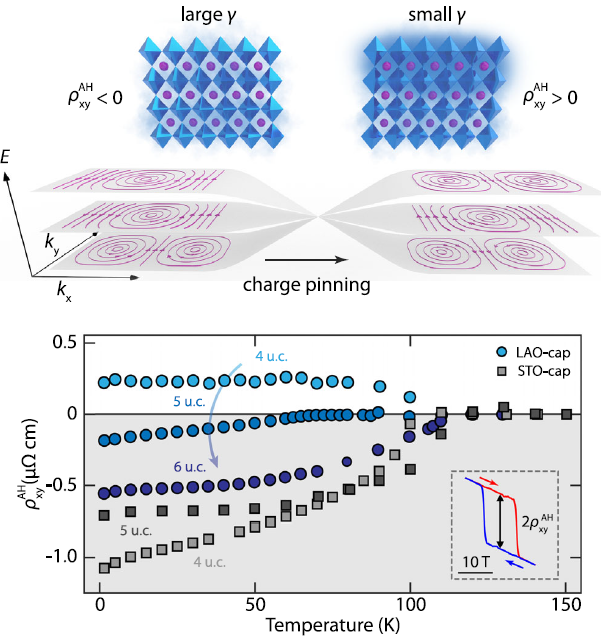News

Anomalous Hall effect. Top: Evolution of topological charges in momentum space (kx,ky) and the corresponding sign change of the anomalous Hall resistance resulting from an increase of the charge confinement parameter γ. Down: measured magnitudes of ρxy for various number of SrRuO3 layers. Insert: resistance magnetic hysteresis serving for determining ρxy.
„Coupling charge and topological reconstructions at polar oxide interfaces ” T.C. van Thiel, W. Brzezicki, C. Autieri, et al. has been published in Phys. Rev. Lett. 127, 127202 (2021)
In this Letter, researchers from the International Research Agenda MagTop, Institute of Physics, Polish Academy of Sciences (W. Brzezicki and C. Autieri), together with the Kavli Institute of Nanoscience in the Netherlands demonstrate control of the momentum-space topological properties of ultrathin SrRuO3, by creating a charge-frustrated interface with the polar wide-bandgap insulator LaAlO3. The charge frustration leads to charge doping of SrRuO3 well beyond the capabilities of conventional electrostatic gates, therefore, forming a pronounced profile of excess charge along the growth axis. It is then demonstrated that in the ultrathin limit, this charge reconstruction modifies the momentum-space Berry curvature and leads to a reversal of the anomalous Hall effect sign below the Curie temperature. The effect results from a drastic change in the values of the Chern numbers of partly occupied band resulting from their non-trivial topology.